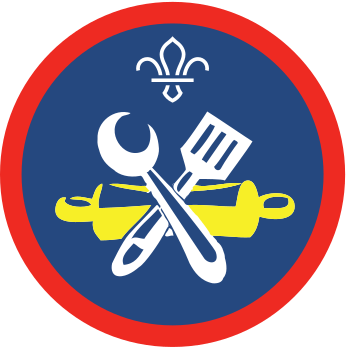Fantasy diners
You’ll need
- Coloured pens or pencils
- Scrap paper
- Access to the internet
- Recipe books
Chat about food
- Everyone should think about reasons people may have dietary requirements. They could think about preferences, religious faiths, moral beliefs, intolerances, and allergies.
- The person leading the activity should remind everyone that it’s important to respect other people – including their relationships with food. Food can be very personal, and it’s important to respect other people’s needs.
Make up a diner profile
- Everyone should split into groups of about eight people.
- The person leading the activity should give each group a few copies of the Allergens poster, Eatwell guide, and Faiths and foods poster.
- The person leading the activity should give everyone some scrap paper. Each group should share some coloured pens or pencils.
- Everyone should create a pretend diner. They should doodle a quick picture and give them a name.
- Everyone should give their pretend diner up to four dietary requirements and explain the reason behind each.
- Everyone should pass their pretend diner three spaces to the left, so everyone ends up with a diner someone else designed.
- The group should gather back together in the middle.
Plan a menu
- Everyone should split into groups of four people.
- Each group should look at their diner profiles. It doesn’t matter if the profile someone designed ends up in their group of four.
- Everyone should make sure they can reach some scrap paper and pens. If they have cookbooks, everyone should share them out.
- Each group should try to plan a meal for an event or overnight stay that caters for everyone’s needs but is also nutritionally balanced. It’s best if one dish suits everyone, as it’s easier, more inclusive, and reduces the risk of cross-contamination. If this isn’t possible, people could design variations of a dish.
- Each group should think about where they’d find the ingredients – for example, would they be able to go to a big supermarket or would they need a specialist shop? They should also think about how much they’d need to buy and how it can be safely stored, prepared, and served.
- Everyone should gather as a big group to share their menus. Each group should take it in turns to describe their chosen menu and share some of the challenges they overcame along the way.
Reflection
This activity was all about caring and respecting others. What different reasons were behind the fantasy diners’ requirements? People may remember examples of allergies, intolerances, religious faiths, moral beliefs, or preferences. Are all of these equally important?
What challenges would some of the fantasy diners face when food shopping or eating out? People may think about things like not having much choice at restaurants (if they’re able to eat there at all), having to read labels carefully, or having to ask questions and trust people’s answers. How do people think it feels to face so many challenges? It may be frustrating, tiring, or even scary to trust strangers with your wellbeing. Try to chat through at least four different diners – a mix of different reasons for requirements will make the discussion more interesting.
What could people do to help a friend with a dietary requirement? For example, they could ask their friend if any restaurants are better than others before deciding where to go, or they could call ahead to let the kitchen know about their friend’s needs. Why is it important that people help each other overcome challenges?
Safety
All activities must be safely managed. You must complete a thorough risk assessment and take appropriate steps to reduce risk. Use the safety checklist to help you plan and risk assess your activity. Always get approval for the activity, and have suitable supervision and an InTouch process.
Don’t presume that people know what different dietary preferences mean – you may need to explain ‘vegan’ or ‘halal’ so everyone’s on the same page.
Change how many dietary requirements each diner’s allowed to have. They could have one or two, to make it simpler.
It’s up to you what cooking facilities you say are available. You could increase the challenge by asking people to plan a meal to be cooked on a campfire, for example.
Try to choose recipe books with pictures, as well as words.
Remember that some people have trickier relationships with food for lots of different reasons. People’s diners are pretend – they don’t have to have the same dietary needs as the people creating them. You may want to reassure people that they won’t have to cook or eat the meals they’re planning in this activity.
Make sure everyone remembers to be respectful about other people’s dietary needs, even if they don’t understand them. In real life, people don’t need to justify their needs to a whole group. They should let the person in charge of cooking know (in private, if that feels more comfortable) who can plan to accommodate their needs in a respectful way.
All Scout activities should be inclusive and accessible.
It’s easy for this activity to lead to real meal planning. Make sure people have a chance to mention their real dietary requirement (in private, if this feels more comfortable). Everyone should adapt their plans to suit the new requirements.
As they play an active role in meal planning young people are leading the discussion on inclusion and developing their resourcefulness.
